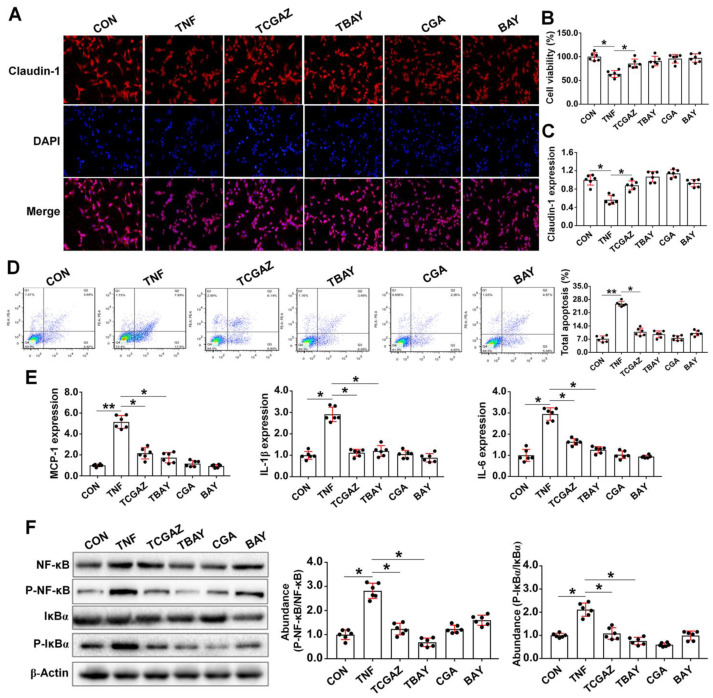Figure 6.
Chlorogenic acid (CGA) suppresses tumor necrosis factor-α (TNF-α) induced inflammation and injury that is independent on the phosphatidylinositol-3-kinase (PI3K)/protein kinase B (Akt)/ heme oxygenase-1 (HO-1) pathway. (A) Localization of the tight-junction protein claudin-1 by immunofluorescence staining. IPEC-J2 cells were plated in 24-well plates at a density of 1 × 105 cells/well (n = 6). (B) Assays of cell viability. (C) qPCR expressions of claudin-1. (D) Analysis of cell apoptosis by flow cytometric assays. In each diagram, Q1 represents the percentage of nonviable and necrotic cells, Q2 represents the percentage of late apoptotic cells, Q3 represents the percentages of early apoptotic cells, and Q4 represents the percentage of live cells. (E) Expressions of critical inflammation-related molecules. (F) Western-blot analysis of critical signaling proteins involved in the NF-kappa-B inhibitor alpha (IκBα)/nuclear factor-κB (NF-κB) pathway. CON, cells without being treated; TNF, cells were treated by 50 ng/mL TNF-α; TCGAZ, cells were pretreated by 10 µM Zn-protoporphyrin-IX (ZnPPIX, the specific inhibitor of HO-1) for 1 h and were then treated by 50 µM CGA and 50 ng/mL TNF-α; TBAY, cells were pretreated by 20 µM (E)3-[(4-methylphenyl)-sulfonyl]-2-propenenitrile (BAY11-7082, the specific NF-κB inhibitor) and were then treated by 50 ng/mL TNF-α; CGA, cells were only treated by 50 µM CGA; BAY, cells were only treated by 20 µM BAY11-7082. * p < 0.05, ** p < 0.01.

